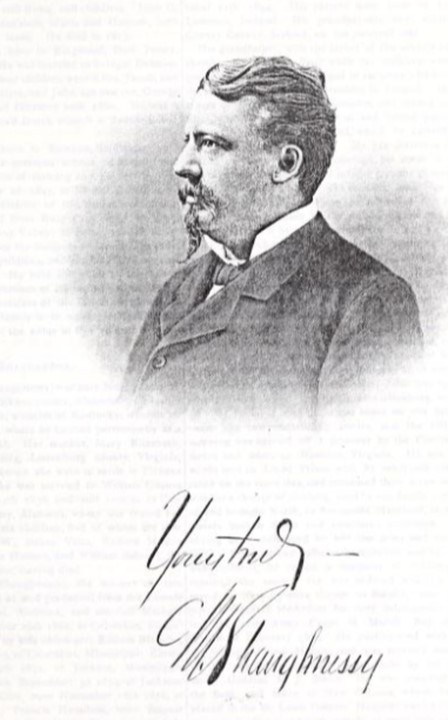On February 20, 1878, President Rutherford B. Hayes sent the name of New Yorker Michael Shaughnessy to the Senate for confirmation as the eleventh U.S. Marshal for Utah. His nomination was ratified on March 12. Shaughnessy, his wife Eudora, daughters Eudora and Mary, and son Philip arrived in Salt Lake City on March 21, where he took office.
As an officer of the federal court, a marshal’s duties included serving warrants, obtaining witnesses, selecting jurors, conducting executions, collecting the census, and serving as warden of the territorial penitentiary. The base salary of the marshal was set at $200 per year and was paid quarterly from the Treasury of the United States.
Marshal Shaughnessy’s reputation as a man who was a stranger to fear preceded him. He was described by those who knew him best as commanding in appearance and brave even to the point of recklessness. He was a magnificent soldier. Entering the army as a seventeen-year-old private during the Civil War, he rose to the rank of lieutenant-colonel of the Second New York Cavalry. Severely wounded at the battle of Gettysburg on July 3, 1863, Colonel Shaughnessy was carried off the battlefield by Confederate forces and taken to Libby Prison where he remained for seven months in a completely broken and emaciated condition. After sufficiently recovering, he rejoined the army in New Orleans.

Credit: From Cole, David, “History of Rockand County, New York: with biographical sketches of prominent men” (1884). Beers, J. B., & co, New York.
Michael Shaughnessy supplemented his meager marshal’s salary by becoming involved in Park City mining. The marshal acquired the Henrietta claim in 1879 shortly after its previous owner, Jacob Smith, had been shot and killed by James Moray in Jack Pape’s Grizzly Saloon on March 3. The Henrietta claim was located 200 feet southwest of the Ontario claim and overlapped the Great Eastern, which Ontario Superintendent R. C. Chambers claimed to own.
By 1879, it was evident that the Henrietta held the western apex of the Ontario vein and was worth far more than the $1,500 value Chambers placed on it. Colonel Shaughnessy believed that the Ontario had extended their underground workings into the Henrietta Mining Claim and were removing large quantities of valuable silver ore from the vein belonging to him. Marshal Shaughnessy sued the Ontario for “A Cool Million” in May of 1880.
On the evening of August 17, 1880, Michael Shaughnessy confronted R. C. Chambers in his Salt Lake City Ontario office. The marshal told Chambers that he had thirty-six hours to pull up stakes that marked a location on Henrietta ground. By Chambers sworn account, Shaughnessy advanced toward him with pistol drawn, calling him foul names of one kind and another and threatening to “riddle him with shot” if he didn’t pull up the stakes.
Colonel Shaughnessy was charged with an assault with a deadly weapon and placed under a $2,000 bond to keep the peace with R. C. Chambers for a period of six months. The culmination of this sensational personal encounter came when the Ontario Mining Company purchased the Henrietta, where the No. 3 hoisting works now stands, from Shaughnessy for $200,000.
This story, and others relating to Shaughnessy and his family, form the Park City Museum’s next lecture, titled “Flame of Ambition,” given by local history buff Steve Leatham on Wednesday, January 10 from 5-6 p.m. at the Museum’s Education and Collections Center located at 2079 Sidewinder Drive.